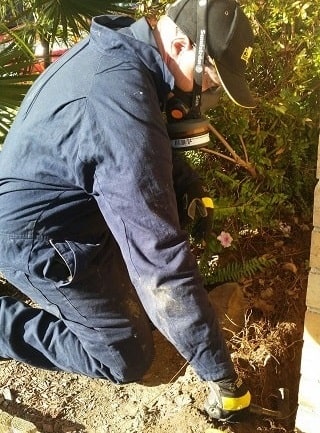Nearly half of Melbourne homes are affected by a termite infestation problem. While it may be difficult to combat this situation once and for all through permanent control and removal, it is still possible to have a termite-free home through regular inspection and treatment.
If you have spoken to any reputed pest control professional before, you'll know that this problem has a few treatments to choose from. Before assuming that the variety advances based on the effectiveness, you should know they are all just as thorough in the protection they offer.
What are they differentiated on the basis of then? To begin with, the two main solutions are termite baits and liquid soil treatments also known as termiticide. Now, you don't necessarily need to apply both to your property.
It could also be that depending on the construction your home has been built in and other factors, just one of these control and removal methods would work. So how do you go about making a selection? Let's start by understanding the difference in these treatment methods.
Termite Bait Stations:
 This protection treatment is based on certain monitor stations being set up in and around your property. They are concealed in the ground and contain a piece of woodor bait that these pests love to feed on.
This protection treatment is based on certain monitor stations being set up in and around your property. They are concealed in the ground and contain a piece of woodor bait that these pests love to feed on.
If there are any active pests on the property or in your home, they automatically gravitate to the bait stations and proceed to carry back the food to the colony.
On inspection, the professional realises that the premises have termites and hence proceed to the next step. The bait slowly but thoroughly kills the entire colony, riding the property of these pests.
It is important that professionals regularly come for inspection of these bait stations in order tobegin treatment as soon as the pests are discovered.
Liquid Soil Treatments:
Both the application and effectiveness of this method depends on the status of the property’s construction, the time of the year, location and most importantly the structure of the home.
In this method, the pest control professional conducts an inspection of the property and then all the touchpoints with which it comes in contact with the earth.
It is important to understand that this treatment cannot be used for removal on the discovery of the infestation but rather needs to be set up beforehand at the time the home is being constructed as a preventive measure. Secondly, it cannot be used alone and needs other termite protection solutions as well.
The only thing it promises is preventing the termites from creeping onto your property through concealed entry points like the foundation of the house, etc. This liquid soil method can also be installed in a way that makes re-application easier. However, you need to mention it to the professional right at the start.
Now comes the assessment part. How do you decide whether liquid soil or bait stations are a better option? Here are certain points on the basis of which you need to find the preferred control and removal solution for your home.
-
What Kind of a Construction do You have?
Melbourne's homes are built in a variety of construction types. In some cases, they have a sub-floor and in some, they have a concrete slab. Whichever type it is, if built with precision and well, you can opt for a liquid soil protection method and the only thing varying would be the price.
-
Are There Any Construction Flaws?
Whether it is an old home or a new one, on closer inspection you will find construction flaws. These flaws interfere with the liquid soil termiticide thus making it ineffective. In case there are any extensions to the premises' landscape you need to ensure you set up a termite protection method in place before-hand to avoid upheaval of the pavers or cobbled roads, etc. If such is the case, it is best you opt for termite bait stations.
-
What Type of Soil is It?
Ideally, for liquid soil control method, you need to have a sandy loam type of soil, which doesn't have rocks in it. Being loose it allows for an even distribution of the soil, creating a protective barrier that's devoid of any gaping holes for the termites to enter through.
If you do not have this type of soil, the technician might suggest replacing the current soil with sandy loam, which means added expense. So, you can consider your options based on budget and preference.
-
Is Your Residential Area Built On a Slope?
If you answered a yes, it is best that you avoid liquid soil protection measures as the termiticide is likely to travel downhill and away from your home. This defeats the entire purpose and leaves your home protection-less and open to the pests.
Finally, you'll want to seek the advice of the professionals. After all, experience is the greatest teacher and with their vast exposure in the field of termite inspections and how liquid soil treatments and bait stations have worked, they will definitely be able to add value to your decisions.